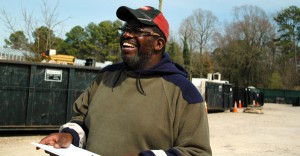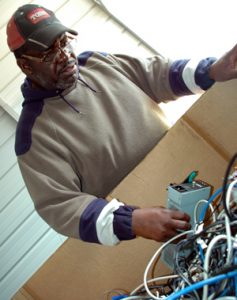Campus recycling site redirects 93 percent of waste from landfill

On the far west side of NC State’s main campus, thousands of pounds of material discarded on campus finds another purpose at the Dearstyne Roll-off Convenience Site. Here, campus yard waste, scrap metal, wooden pallets, used tires and more are collected and sorted before 93 percent of material is reused or recycled.
From campus construction debris to electronics and other items banned from N.C. landfills, this multi-purpose recycling and disposal facility takes in the misfits of discarded material – the items that traditional municipal waste or recycling won’t accept.
“It can be a challenge to find acceptable disposal or recycling options for many of the items that come to the site,” said Nessa Stone, operations manager for NC State’s Waste Reduction and Recycling. “We are committed to finding better waste management solutions by identifying new recycling markets as they become available.”
Because the market for recycled material changes constantly, items that last year may have been sent to landfills might now be recyclable. For example, the site began recycling rigid plastics such as buckets in February, already diverting 7,100 pounds of this material from landfills.

Before the facility opened in 2011, campus construction waste accumulated at a small bulk waste site near Sullivan Shops. But with little room to collect, haul and sort materials, many items were ultimately thrown away. Now, the Dearstyne facility reuses or recycles nearly all of its 100 weekly deliveries, which are mostly from Facilities and University Housing.
“But others [on campus] are hearing about the site,” said the site’s supervisor Gerald Sanders, who helped build the facility. “People should bring their stuff here so they aren’t throwing in dumpsters.”
Currently, NC State diverts nearly half of campus waste from landfills, but the university’s goal is to increase that to 65 percent.
“In order to reach our diversion goals the rates of reuse and recycling must increase and the amount of waste going to the landfill must decrease,” Stone said.
- Categories: